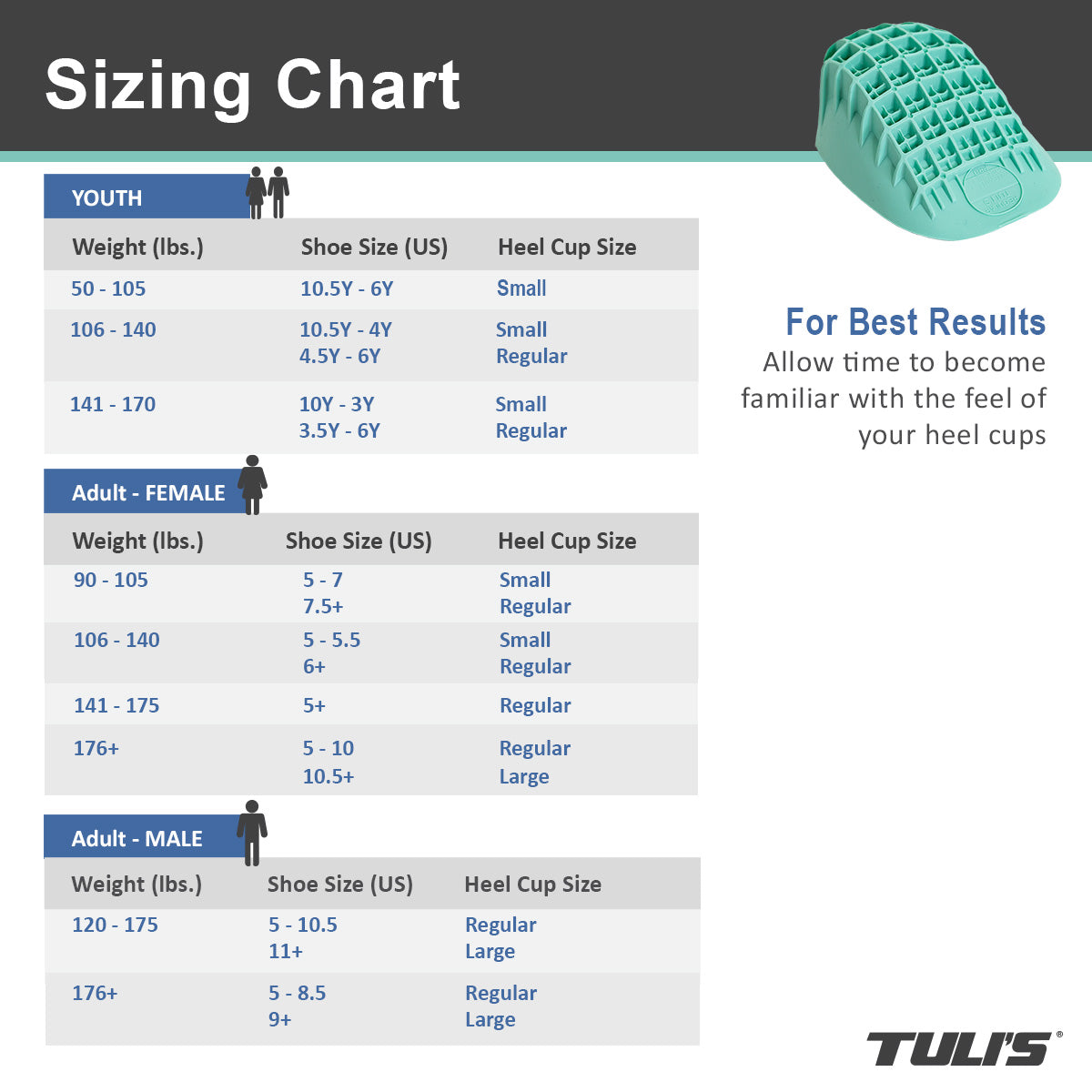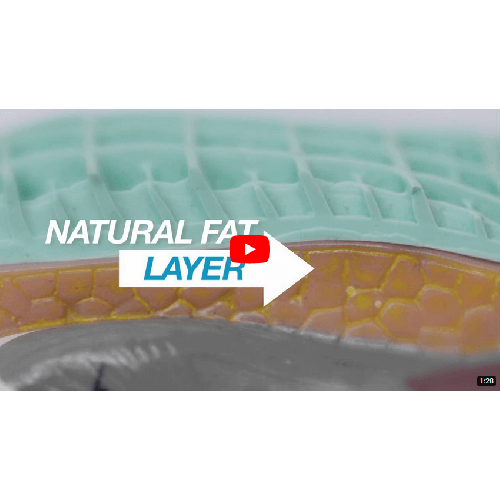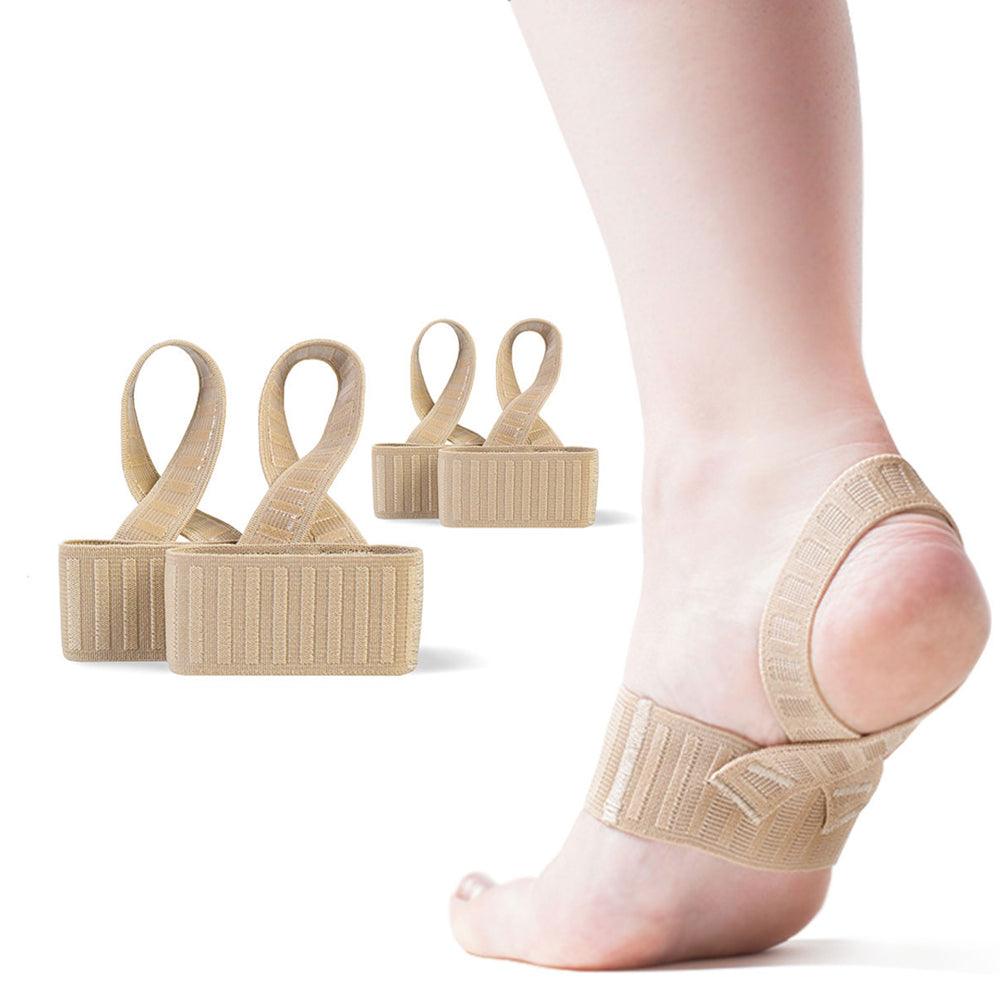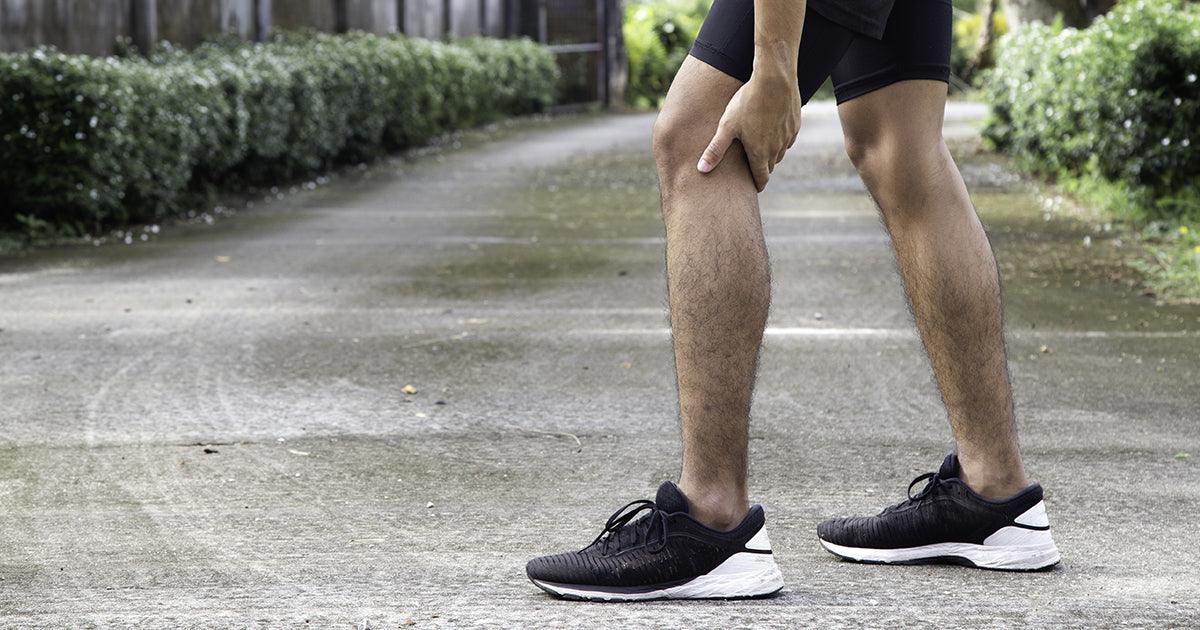Stretches to Relieve Sever's Disease
If your child is suffering from heel pain, Sever’s disease may be to blame. Commonly associated with growing pains, it often develops in children and young athletes going through a growth spurt. Fortunately, there are some simple Sever’s disease treatment stretches your child can do, or you can both do together, to help alleviate the pain.
Table of contents:
- How Does Sever’s Disease Develop?
- Who Gets Sever’s Disease?
- What are the Signs and Symptoms of Sever’s Disease?
- How to Prevent and Treat Sever’s Disease
- How Stretching Helps with Heel Pain Relief
- Stretches to Do for Sever’s Disease
- Recovery How Medi-Dyne Can Help?
How Does Sever’s Disease Develop?
Sever’s disease is a growth plate condition resulting in an inflamed heel. It primarily occurs in young athletes and adolescents going through puberty. The rapid growth spurts that occur during this time in a child’s life can cause his or her bones to develop faster than the muscles and connective tissue.
This causes inflammation and loss of flexibility in the heel. It also causes pain. The tightened muscles and tendons creates pain in the affected area. Combined with the added pressure of a stiffened heel structure, all weight-bearing activities are severely restricted.
To prevent or relieve the symptoms of Sever’s disease in your child, physicians often recommend certain Sever’s disease treatment exercises and stretches targeting the heel and lower leg.
Who Gets Sever’s Disease?
Sever’s disease is most common among children going through adolescent growth spurts. For boys, growth spurts typically take place between the ages of 10 and 15. Girls, on the other hand, typically experience growth spurts from the age of eight up until 13 years of age.
Sever’s disease is less common in older teens. By the time a child reaches late adolescence, his or her growth plates will have hardened to become solid bone. The muscles and tendons will also have lengthened to keep up with their bone growth.
Young athletes participating in gymnastics, basketball, track, and other high-impact sports are more likely to suffer the effects of Sever’s disease. However, children who are less active are still at risk. Regardless, there are certain Sever’s disease stretches that can help.
What are the Signs and Symptoms of Sever’s Disease?
There are several signs and symptoms of Sever’s disease, but heel pain or tenderness in one or both heels is the most common. Although the pain is usually felt towards the rear of the heel, it can also occur on the bottom and sides of the heel. If you have a child with Sever’s disease, his or her symptoms may include:
- Pain in the heel
- Waking up with foot stiffness or discomfort
- Limping, especially after high-impact activity
- Redness and swelling around the heel
How to Prevent and Treat Sever’s Disease
If it’s a severe case, your child may need a walker boot or short cast to immobilize his or her foot and protect the growth plate while it fully recovers. That said, this is quite rare, and in these cases, laser therapy or surgery is typically used. If it’s a less severe case, our Tuli's Heavy Duty® Heel Cup and/or Tuli's® The X Brace® and the following recommendations can help:
- Wear well-fitting, good quality shoes with shock absorbent soles to minimize heel pressure.
- Avoid heavy shoes or shoes with heels.
- Avoid intense or long period of running on hard surfaces.
- Follow a nutritious diet and maintain a healthy weight.
- Perform Sever’s disease treatment exercises and stretches before and after sports activities.
How Stretching Helps with Heel Pain Relief
You can tell if your child is suffering from Sever’s disease by noticing a few tell-tale signs. The most obvious is if your child experiences heel pain when walking or participating in a physical activity.
Sever’s disease can also be diagnosed by performing the “squeeze test.” This involves pinching the heel on both sides to reveal any pain or irregular stiffness.
If diagnosed, a pediatrician may recommend specific Sever’s disease stretches to do in order to help alleviate the symptoms.
Why? Well, Sever’s disease can be treated and even prevented by regular stretching to maintain flexibility. Regular stretching will promote good flexibility and strengthen the muscles surrounding the afflicted area to combat the disease.
By counteracting the stiffness of the afflicted area, Sever’s disease treatment stretches will also reinvigorate the muscle structure. The added attention paid to the heel and calf muscles will directly improve your child’s Sever’s disease symptoms.
While incorporating specific stretches to do for Sever’s disease that target the soleus and gastrocnemius muscles can help your child overcome the pain and stiffness associated with the disease, your child should only stretch when not experiencing pain. If he or she stretches while experiencing pain, inflammation will only increase and cause the pain to get worse.
Also, before your child begins performing any Sever’s disease treatment stretches for the first time, it’s important to test their flexibility. Doing so, will help you decide which types of stretches and exercises to incorporate into his or her stretching routine.
That said, there are certain Sever’s disease treatment exercises that are most popular for preventing Sever’s disease and alleviating its painful symptoms. Here’s a look at some simple stretching exercises your child can do to stay pain-free and on their feet.
Stretches to Do for Sever’s Disease
Before trying out the stretches below, your child should actively stretch to prepare the muscles for more rigorous treatment. This simply involves stretching the foot and toes by slowly pulling them in an upward motion. While doing this, the calf will stretch and tighten, so make sure it is done slowly and gently to avoid prolonged pain. After warming up the muscles by doing this successfully for a short period of time, your child can move on to more targeted Sever’s disease stretching exercises.
1) Gastrocnemius Stretch
Attached above the knee, the gastrocnemius muscle allows the knee, ankle, and foot to flex at each of their joints.
To perform this stretch:
- Find a wall to help with balance.
- Keep the heel grounded while slowly leaning and pushing forward towards the wall.
- Hold the position for up to 45 seconds.
2) Soleus Stretch
This stretch is designed to exclusively stretch the soleus muscle located behind the calf in the lower leg. It will isolate and stretch this specific muscle without stretching several others all at once.
To perform this stretch:
- Stand facing a wall about three feet away.
- Step forward with the right foot.
- Place both hands on the wall.
- Lean forward while bending both knees.
- Hold for up to 60 seconds.
- Relax, switch legs, and repeat.
3) Heel Dips
Heel dips are a popular stretch designed to stretch the calf and help alleviate pain associated with both Sever’s disease and plantar fasciitis.
To perform this stretch:
- Stand on a step (preferably the bottom one).
- Grip the handrail for balance and safety.
- Slide the feet backwards so the heels are hanging and only the toes are on the step.
- Gently drop the heels down until the calf muscle is stretched.
- Hold the stretch for 10 seconds and repeat five times.
4) Towel Stretch
The towel stretch obviously involves the use of a towel. Unlike the other more targeted stretches, it stretches the foot, heel, calf, hamstrings, and lower back as well.
To perform this stretch:
- Sit down on a hard surface with the legs outstretched straight ahead.
- Keep your knees straight.
- Loosely roll a towel lengthwise, grab the ends, and loop it around the balls of both feet.
- Pull the towel and toes toward the body.
- Hold the position for 30 seconds.
- Repeat three times.
5) Towel Scrunches
Towel scrunches are a little more abstract, but they will promote mobility in the foot and strengthen the plantar fascia.
To perform this stretch:
- Put a towel on the ground.
- While standing, shorten your toes and feet and try to scrunch the towel.
- Continue the exercise for one to two minutes.
- Repeat twice per day.
6) Seated Calf Stretch
This stretching exercise is similar to the towel stretch, except it involves a chair and an elastic band.
To perform this stretch:
- Sit on a chair.
- Place an elastic band around the balls of both feet.
- Keeping a straight back, pull the elastic band so the toes point towards the shinbone.
- Hold the position for 30 seconds.
- Repeat up to five times.
7) Wall Calf Stretch
The wall calf stretch is a variation of the soleus stretch.
To perform this stretch:
- Stand facing a wall.
- Slowly lean forward and place both hands on the wall.
- Bend one knee and stretch out the other leg straight behind you.
- Make sure to keep the stretched leg straight.
- Hold the stretch for 30 seconds.
- Switch to the other leg and repeat 10 times.
8) Plantar Fascia Stretch
The plantar fascia stretch is simple, straightforward, and easy for any child to execute.
- To perform this stretch:
- Stand facing a wall.
- Place one foot up against the wall.
- Lean forward towards the wall until a stretch is felt in the calf muscle and sole of the foot.
- Switch legs and repeat three to five times.
9) Assisted Calf Stretch
Unlike the other stretches, which your child can do on his or her own, this stretch requires some help.
To perform this stretch:
- Have your child sit on the ground with outstretched legs and straight knees.
- Gently bend your child’s foot towards his or her stomach.
- Stop when they feel a tightening and hold for 30 seconds.
- Switch to the other foot.
- Repeat five times per foot.
10) Hamstring Stretch
As its name suggests, this stretch will stretch the hamstring. However, by using a band and providing resistance against the foot, it will also stretch the heel and plantar fascia.
To perform this stretch:
- Lay down on the floor facing up.
- Place a resistance band under one foot.
- Holding the band, raise a leg by flexing at the knee and hip.
- Push the heel toward the ceiling to slowly straighten the knee.
- A stretch will be felt in the heel, hamstring, and thigh.
- Hold the stretch for 45 seconds.
- Switch to the other leg and repeat.
- Do three sets twice per day.
11) Foam Roller Calf Stretch
Instead of a wall or resistance band, this stretch uses a foam roller to stretch the calf and Achilles tendon.
To perform this stretch:
- Place a foam pool roller between the calf muscle and the Achilles tendon of one leg.
- Place the other leg across the leg being stretched for increased pressure.
- Roll the roller up and down the calf while keeping it relaxed.
- Do this for two minutes, then switch legs.
- Repeat once more per leg.
12) Single Heel Raise
This is a simple yet effective stretch any child can do to alleviate the pain, tightness, and other symptoms of Sever’s disease.
To perform this stretch:
- Hold onto a table.
- Lift one heel up off the ground.
- Set it back down and repeat the stretch 10 times.
- Switch to the other heel.
- Once the stretch can be performed without stiffness or pain, try it without holding onto the table.
13) Double Heel Raise
The double heel raise is exactly like the single heel raise. However, you guessed it, instead of lifting one heel at a time, your child will lift two.
To perform this stretch:
- Hold onto a table.
- Lift both heels up off the ground so only the balls of the feet are touching.
- Set the heels back down and repeat the stretch 10 times.
- Once the stretch can be performed without stiffness or pain, try it without holding onto the table.
14) Lunges
Lunges are a common stretching exercise designed to help promote overall strength and flexibility.
To perform this stretch:
- Stand with the right foot behind the left.
- Bend the left leg to form a 90-degree angle at the knee.
- With the back straight, lower the body towards the ground by bending the right leg.
- Hold the position for five seconds.
- Switch legs.
- Repeat the exercise up to 10 times.
Recovery
Recovering from the effects of Sever’s disease varies from one child to the next. In many cases, the disease goes completely away with rest, time, and the right treatment exercises. However, without proper treatment, the symptoms may worsen. Playing through the pain will also worsen any symptoms. Therefore, your child should only increase activity after any symptoms have subsided. When the symptoms do subside, regularly continuing the stretching exercises above will help prevent reoccurrences until the growth plates close.
How Medi-Dyne Can Help?
These targeted stretching exercises have consistently helped active children and young adolescents alleviate the symptoms of Sever’s disease. If your child is suffering from pain related to Sever’s disease, use these exercises to develop a regular stretching routine. By doing so, he or she should be back in action in no time at all. However, if stretching alone doesn’t do the job, we have a line of products designed to provide support, relieve and prevention.
PLEASE NOTE: The information on this website and article is for information only and should not be used as a substitute for consulting your doctor. Consult your doctor for proper diagnosis and rehabilitation.































